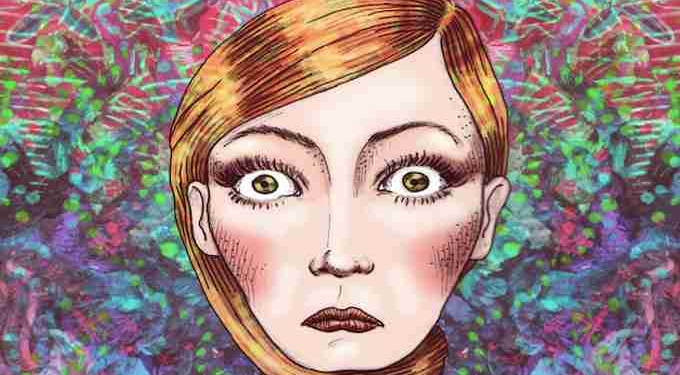
By Hailey Magee | Tiny Buddha
“If you always feel like you’re too much or too little, maybe you’re adding yourself to the wrong recipe.” ~Sophia Joan Short
There is an art to shrinking yourself.
As a young girl, I was painfully earnest. I hadn’t learned the craft of nonchalance that was as much a requirement for being liked as name-brand clothes and Livestrong wristbands. One day, as I chattered excitedly on the school bus home, my seat-mate scolded me: “Hailey. Calm down. You’re so annoying.”
This is how I learned that my enthusiasm made me unlikable.
At home, short tempers led to angry arguments. After conflicts, my dad would withdraw his love in a stormy silent treatment until I cleared the air—or until we both agreed to pretend that nothing ever happened. I learned the art of walking on eggshells. When I was fifteen, Dad and I got into an argument and didn’t speak for days. We orbited around each other like silent planets in a lonely solar system.
This is how I learned that my anger made me unlovable.
Years later, my first adult relationship began to unravel. I felt the pain of our withering love acutely. My then-partner withdrew further into himself with every argument, every tear, every dissonance. The more I tried to repair our broken love, the more distant he became.
This is how I learned that my needs would push away the people I loved the most.
Where did you learn that you were too much?
Were you bullied at school? Mistreated at home?
Did your caregivers say you were too loud, too energetic, too difficult? Did they neglect your interests, deny your feelings, or punish your anger?
Did your lovers withdraw their affection when you expressed your true feelings? Did they balk at your trauma? Did they hold you at arms’ length?
These experiences leave us with a resounding mantra:
I am too much.
I am too much.
I am too much.
But you are not. Here’s why.
The Beauty of “Too Much”
Those of us who give ourselves permission to feel deeply give ourselves the gift of fully participating in this world.
We embrace the vast palette of emotion that living demands. We experience the valleys of loss, the black pain of grief, and the jagged edges of trauma. We also experience the searing catharsis of inspiration, the rich colors of joy, and the deep, calm ocean of love.
Because we feel so richly, our hearts are calm harbors where others’ pain can seek refuge. We are empathetic and expansive, and when we say, “I hear you, I’ve been there,” we really mean it.
We do the hard labor of living, of feeling, every day. We have built within ourselves a powerful infrastructure for empathizing, connecting, and relating. This gives us a profound capacity to connect with others —others who are capable of meeting us there.
It’s Not About You
Every time someone implies that you are “too much,” they express their own limitations.
Emotional intensity scares those who have never learned to access their own emotions. If they don’t know how to feel their own pain, sadness, or joy, they will be incapable of handling it in others.
What they say is:
- “You’re being too dramatic.”
- “Do we always need to talk about our feelings?”
- “Everything’s fine. Why are you so upset?”
- “I can’t do this.”
What they are really saying is:
- “I am afraid of your pain because I do not allow myself to feel my own.”
- “I am afraid of your vulnerability because I never learned how to be vulnerable.”
- “I do not have the tools to handle conflict, so I will avoid it.”
- “I am afraid of failing because I don’t know how to take care of you.”
















